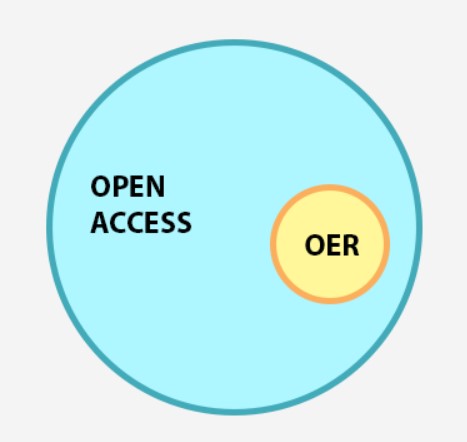Open Access and Open Educational Resources
Are OA and OER the same thing?
The short answer is no. The longer answer is that Open Educational Resources (OER) represent a subset of Open Access (OA) material. OER are always OA, but not all OA materials are considered OER.

Image Reference: University of Rochester. (n.d.). Are OER and OA the same thing? River Campus Libraries. University of Rochester. https://www.library.rochester.edu/services/open/are-oer-and-oa-same-thing
A more detailed answer is, while these concepts are closely related, they are not synonymous. To clarify, Open Access refers to materials, such as research articles, books, and data, that are freely available online without any subscription or payment barriers. This open access ensures that scholarly knowledge is disseminated and accessible to a global audience.
Open Educational Resources, on the other hand, are educational materials that are not only freely accessible but also openly licensed, allowing for adaptation, redistribution, and reuse. This means that instructors and learners can modify OER to suit their specific needs, creating a flexible learning environment.[1]
While all OER are OA—since they are freely available and openly licensed—not all OA materials qualify as OER. The key distinction lies in the purpose and licensing. While OA content may be openly available, it is not always designed to be adapted for teaching and learning purposes.
The following subsections will further illustrate and explain the key differences between Open Educational Resources (OER) and Open Access (OA), highlighting their distinct characteristics.
Developed by William Perrenod and licensed under CC BY 4.0
- Creative Commons Team (2020). Creative Commons for Educators and Librarians. Chicago, IL: ALA Editions ↵
